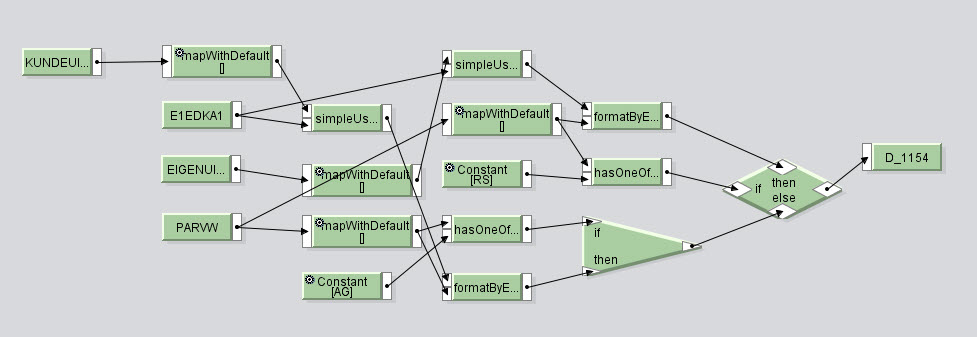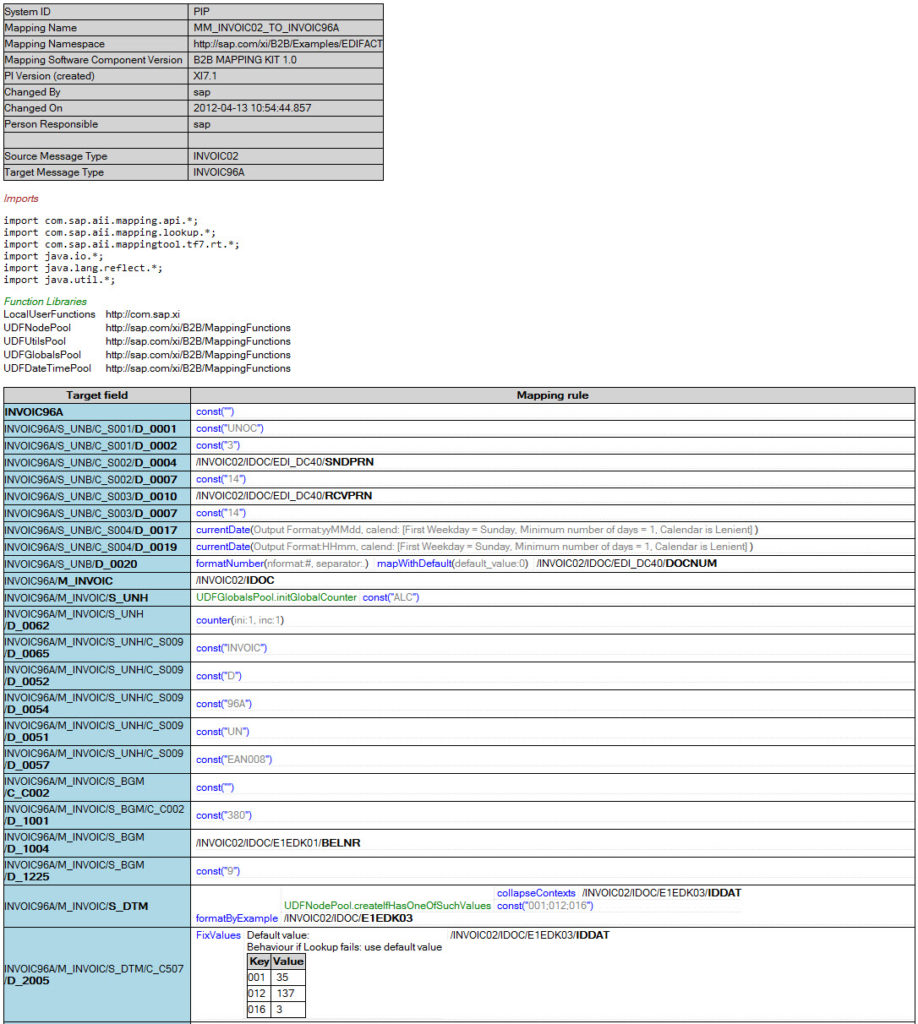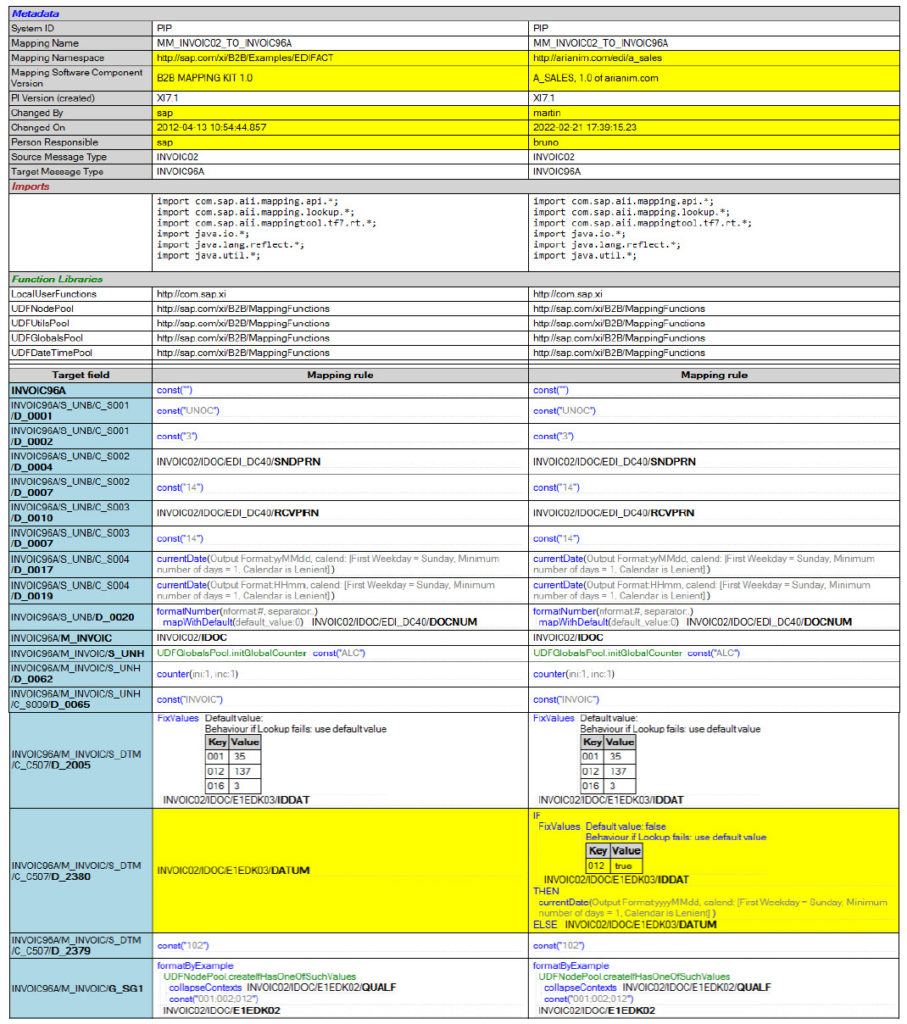SAP Graphical Message Mapping
Documentation, Comparison and Similarity Analysis
Does anyone love their SAP Graphical Message Mappings?
One constant throughout all of SAP’s very successful integration journey from XI to PI, and then to PO, has been their Graphical Message Mapping Editor.
Like it or not, it has also made the leap to the cloud as well. As Morton Wittrock pointed out in a blog a few years ago “Cloud Integration mapping: Your options explained and compared“:
- it allows you to “drag and drop” source fields to target fields
- it does not require any coding (well … we will get to that)
- it comes available with lots of built functions
- and you can build your own functions as well (ok … there is some coding)
The great advantage of the Message Mapping Editor is it’s ease of use and it’s graphical nature, and my ‘gut feel’ tells me it is used in something like 80% of all mappings. But you need to be careful – as soon as the requirements get somewhat complicated, you end up with a message mapping that is really really ugly, and difficult to understand, support and maintain. And that is where Java and XSLT (and now Groovy and JavaScript) really get to shine.
Even with the ≈ 80% of mappings that the graphical mapping editor is suitable for, it is still difficult to understand how the mapping works, without a certain level of technical expertise. Just try to make sense of the mapping rule for target message field D_1154, depicted in the image above.
SAP have not offered any sort of message mapping documentation solution, and so there is a great dependency on SAP PI/PO and SAP CI technical experts. There are some basic methods available to extract the information, and load it into Excel, where comparison of the mappings is also possible, but it’s not ideal.
Message Mapping Documentation
There is a better solution – we’ve created a Message Mapping Documentation feature that enables the easy review of message mappings. Non-technical people can now make some sense of message mappings, and SAP PI/PO and SAP CI technical experts do not need to waste their time creating documentation (I know I hated doing this years ago).
The message mapping rule for target message field D_1154 shown above is transcribed into the following documentation – which is clearly much easier to understand.
The message mapping documentation created includes the meta data, information about Function Libraries, and also any local UDF code. Elements, such as standard SAP functions and function calls, are colour-coded to improve readability.
Message Mapping Comparison
Some years later we built on the Message Mapping Documentation with a Message Mapping Comparison feature, to enable the quick determination of differences in message mappings.
Comparing two message mappings is simple and clear, with any differences highlighted in yellow.
Message Mapping Similarity Analysis
And, in 2022, we developed the unique Message Mapping Similarity Analysis, so you can easily compare all your message mappings against all your other message mappings, to identify your message mappings that are say, “90% or more similar” (similarity % is configurable, from 50% to 100%).
The result of the analysis is shown below – by selecting the primary mapping on the left you can see all of its similar mappings on the right. And from here you can easily determine exactly how the mappings differ by clicking on ‘Compare’.
These mapping features are just a small part of our UDO client software, which is easily installed and configured on your client (admin rights not required) – you can be reviewing your interfaces and mappings in as little as 20 mins. All that is required is a PI/PO user with display authorisations. The software cannot make any updates to your PI/PO interfaces and your data does not leave your network.
I hope this has opened up your eyes about what is possible when working with SAP Message Mappings.If you’re interested in finding out more, contact me, on LinkedIn. Or find us on the SAP Store. If you like, we can give you a short demo and an evaluation version – you can then try it out in your own environment, on your own PI/PO mappings.




